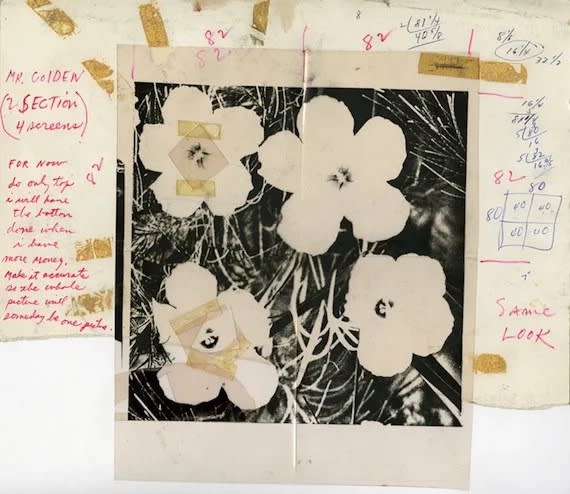Andy Warhol, a paramount figure in the Pop Art movement, has left an indelible mark on the 20th-century art landscape. Among his diverse and expansive body of work, Warhol's Flower paintings, created in the vibrant era of the mid-1960s, stand out as a testament to his ingenious ability to blend art with consumer culture through the lens of mechanical reproduction techniques. While Warhol is universally acclaimed for his iconic representations of everyday consumer goods and celebrity portraits, his exploration of floral imagery through the Flower series encapsulates a lesser-known, yet equally fascinating, dimension of his artistic endeavors.
The inception of the Flower series in 1964 was marked by Warhol's adaptation of a photograph of hibiscus flowers taken by Patricia Caulfield, which appeared in a 1964 issue of "Modern Photography." This transformation of a photographic image into a series of silkscreen prints allowed Warhol to experiment with an array of color combinations, resulting in a multitude of striking variations on the theme. The choice of flowers as a subject diverged from the more overtly commercial or celebrity-focused themes prevalent in his other works, offering a more universal symbol that was ripe for Warhol's exploration of repetition, color, and form. This departure from the personal expressionism that characterized the works of his Abstract Expressionist contemporaries underscored Warhol's embrace of pop culture and artifice.
The investment trajectory of Warhol's Flower paintings mirrors the broader art market trends, with these pieces experiencing significant appreciation over the years. Initially, these artworks were more accessible to a wide range of collectors, but as Warhol's fame persisted and his place in art history solidified, the Flowers series evolved into highly sought-after assets. The auction market for these works has seen remarkable prices, occasionally surpassing high estimates, a testament to their enduring demand. The investment allure of Warhol's Flower paintings is multifaceted, drawing on their aesthetic appeal, historical significance, and the scarcity driven by limited availability. As such, they have become emblematic of the potential for artworks to serve as both cultural artifacts and valuable investments.
The exhibition history of Warhol's Flowers is as rich and varied as the series itself. Museums and galleries around the world have showcased these works, placing them within the broader narrative of Warhol's exploration of pop culture, commercialism, and artistic innovation. Exhibitions dedicated to Warhol's Flowers delve into the technical aspects of his silkscreen process, highlighting the methodical yet creative approach Warhol employed to mass-produce images that still maintained a unique aesthetic appeal. These showcases often contextualize the Flowers within Warhol's larger oeuvre, illustrating how this series intersects with his ongoing investigations into the nature of beauty, the commodification of art, and the interplay between natural forms and their artistic representations.
In addition to their significant presence on the auction block and within museum walls, Warhol's Flower paintings have also sparked scholarly interest and public fascination. Critics and art historians have explored the series' place in the trajectory of Warhol's career, noting its departure from his more overt critiques of consumer culture to engage with themes of mortality, transience, and the beauty inherent in repetition. This scholarly attention underscores the depth and complexity of Warhol's Flowers, revealing layers of meaning that extend beyond their immediate visual appeal.
In conclusion, Andy Warhol's Flower paintings encapsulate a unique confluence of artistic innovation, cultural commentary, and investment potential. As enduring symbols of Warhol's artistic legacy, they continue to captivate collectors, scholars, and the general public alike. Through the lens of the Flowers series, we gain insight into Warhol's multifaceted exploration of pop culture, art, and the nature of beauty, solidifying his status as one of the most influential artists of his time. The sustained interest in these works, both as objects of aesthetic enjoyment and as valuable assets, speaks to the enduring power of Warhol's vision and the timeless appeal of his art.
Discover our selection of Andy Warhol prints for sale and contact our New York & London galleries via info@guyhepner.com for further details. Looking to sell? Speak to our galleries on how to sell Andy Warhol prints.
February 15, 2024




